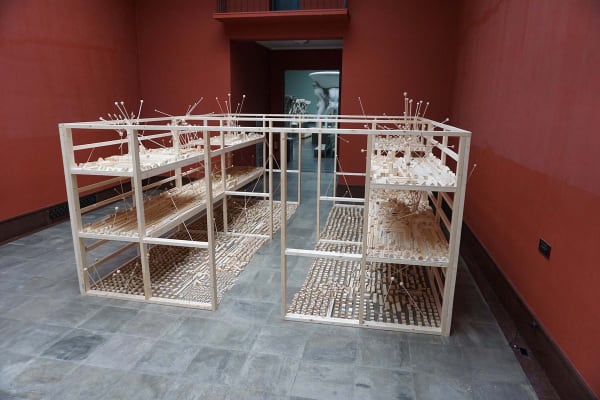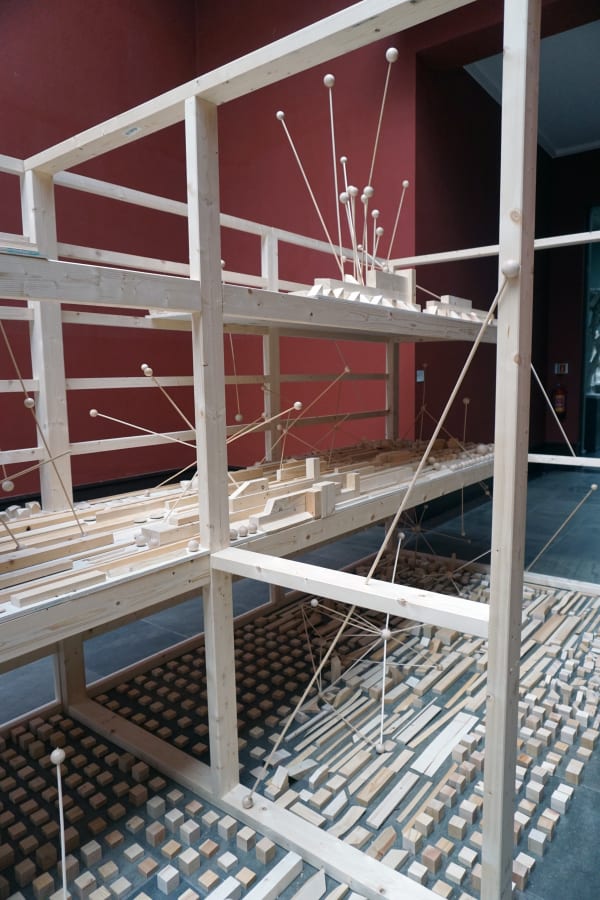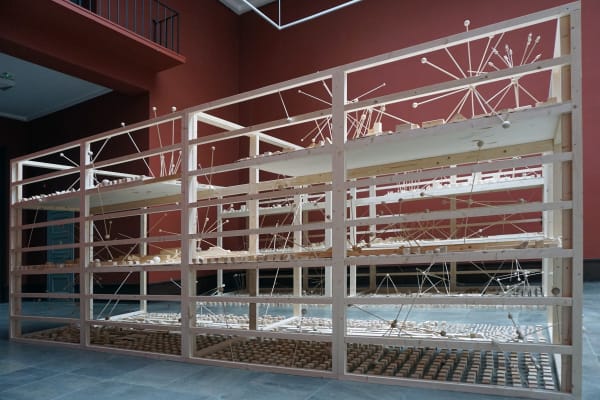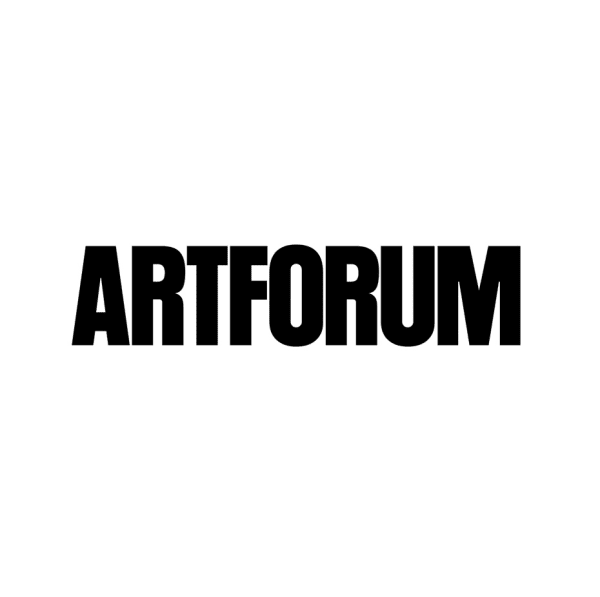Norwegian Sculpture Biennal: Oslo, Norway
Eamon O’Kane’s installation The Wood Archive, 2015, presents an array of small wooden objects that underline the temporality and social memory of natural substance. Nature is transformed, stored, and structured in an archive, reminding us of modern relations between art and memory.
Sara R. Yazdani, Artforum
Architecture is also what Eamon O’Kane explores in his work The Wood Archive (2015), created for the biennial. The building blocks in the particular structure we can walk through, study up close and partially move around make visible how we produce organic shapes and processes – not only scientific but also social ones, as for instance in play. O’Kane has for several years now been interested in the nineteenthcentury educator Fredrich Fröbel, the man who originated the modern day kindergarten. As part of his approach to encouraging children to learn, Fröbel also developed educational toys such as wooden
building blocks. O’Kane has also long been fascinated by carbon as one of the vital elements for life.
Both scientific models and building blocks help us visualise and explore the world around us, but here the objects have been placed without any immediately discernible relationship to one another. O’Kane thus breaks from the very order alluded to in the title. This is neither an archive nor a library of recognisable shapes: rather, the common feature in this installation is that everything is made of wood. O’Kane sees this as a study of entropy, where the material of wood represents a snapshot of carbon on its way towards decomposition. The material is thus treated by the artist as an accumulation of associations.
Text from the catalogue essay by Biennal curator Anne Szefer Karlsen








